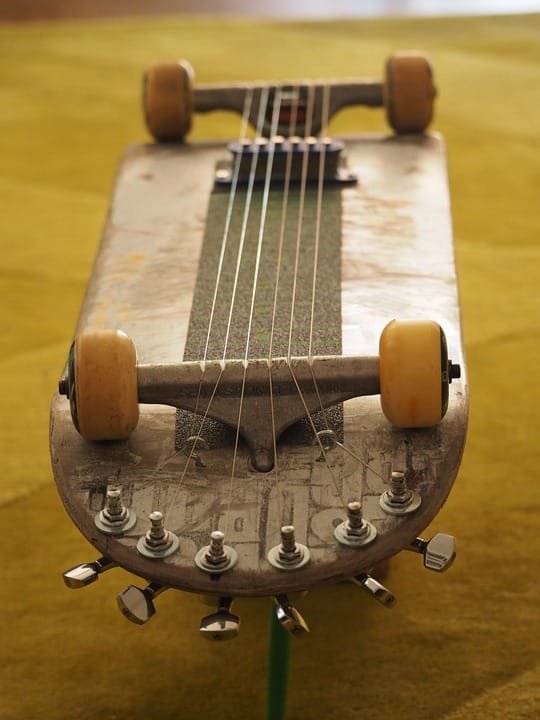Embracing Sustainable Fashion: A Journey to Conscious Living and Self-Expression
As I venture down the path of sustainable fashion, I’m met with a twofold realization: the devastating impact of fast fashion on the environment and humanity, and the exhilarating possibility of revolutionizing the way we dress. In this article, I’ll share my personal journey, explore the concept of sustainable fashion, and offer practical advice on making a positive difference.
The Dark Side of Fast Fashion
Fast fashion is built on a foundation of cheap labor, environmental degradation, and social injustice. Millions of workers, often women and children, toil in sweatshops, earning poverty wages and facing hazardous conditions. The environmental impact is staggering, with the fashion industry responsible for 10% of global greenhouse gas emissions.
[Image: A photo of a crowded, poorly lit textile factory, with workers bent over sewing machines]Discovering Sustainable Fashion
Sustainable fashion is not just a trend; it’s a movement that prioritizes the well-being of people, planet, and profit. This new approach focuses on eco-friendly materials, slow fashion, and upcycling. By adopting sustainable practices in clothing production and consumption, we can reduce waste, conserve resources, and promote fair labor practices.
Eco-Friendly Materials
From recycled polyester to organic cotton, sustainable fabrics are revolutionizing the way we think about clothing production. Innovations in material science have enabled the development of:
- Tencel: A lyocell fabric made from wood pulp, known for its softness and breathability.
- Piñatex: A pineapple-leaf-based fabric, proposing an alternative to non-renewable resources.
- Upcycled materials: Transforming old or discarded materials into new, unique fabrics.
Image: A photo of a worker surrounded by rolls of sustainable fabric, with an infographic highlighting the benefits of eco-friendly materials
Slow Fashion and Upcycling
Slow fashion encourages consumers to appreciate the value of their clothes, keeping them for longer and repairing or repurposing items instead of discarding them. Upcycling, a creative process that transforms old materials into new, valuable products, is an essential part of this approach.
- Creative Upcycling Projects: Turning old t-shirts into reusable bags, creating broomstick headboards from vintage buttons, and repurposing jeans into stylish planter boxes.
- Thrift Shopping: Scouring local second-hand stores for hidden gems, giving new life to pre-loved clothing.
Embracing Sustainable Fashion: A Personal Journey
My journey to sustainable fashion began with research into ethical fashion brands, which prioritize transparency, fair labor practices, and eco-friendly production methods. I discovered brands like:
- Patagonia: Offering a range of sustainable clothing options, including recycled materials and environmentally certified production processes.
- Reformation: Focusing on sustainability through fabric sourcing, production, and waste reduction measures.
Tips for Making the Switch to Sustainable Fashion
- Research: Learn about the clothing brands you support, their sourcing practices, and environmental impact.
- Shop Second-Hand: Visit local thrift stores, consignment shops, or online marketplaces for pre-loved clothing.
- DIY: Repurpose old clothes, mend and repair, or create your own accessories.
- Upcycle: Transform old materials into new, unique products.
- Join the Movement: Share your sustainable fashion journey, inspire others, and stay informed about industry updates.
Conclusion
The fast fashion industry is not sustainable, and it’s time for a change. By adopting sustainable practices, we can reduce waste, conserve resources, and promote fair labor practices. The journey to sustainable fashion is not only good for the planet but also for our well-being and self-expression. Join the movement, and together, let’s create a more conscious and compassionate fashion industry.
Frequently Asked Questions
Q: How can I afford sustainable fashion?
A: Start by making small changes, like shopping second-hand or DIY projects. You’ll be surprised at the creative possibilities and cost-effective options.
Q: What are some eco-friendly brands I can support?
A: Look for brands that prioritize sustainability, transparency, and environmentally certified production processes. Patagonia, Reformation, and H&M’s Conscious Collection are great starting points.
Q: How can I slow down my fashion consumption?
A: Take a 30-wear challenge – wear an item 30 times before considering replacement. Prioritize quality over quantity, and focus on nurturing relationships with your clothes.
Join the sustainable fashion revolution by adopting eco-friendly practices, embracing slow fashion, and upcycling. Together, we can create a more conscious and compassionate fashion industry that values people, planet, and profit.








Leave a Reply